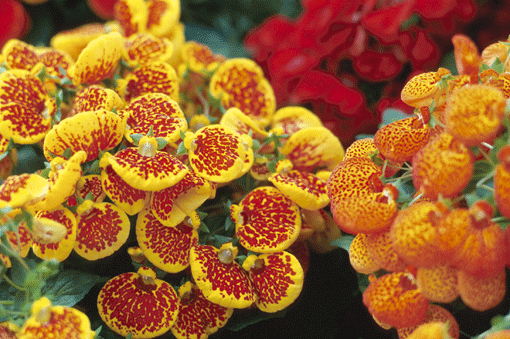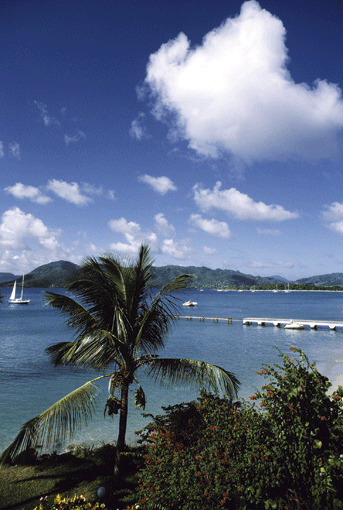
Travel
Martinique
Flower of the Caribbean

Abundant songbirds, colourful spice markets, tropical nights with boisterous music and Creole cuisine are just some of the exotic sensations Martinique has to offer.
By: Veronica Maria Garbutt
This little slice of France in the Caribbean also boasts boutiques crammed with the latest fashions from Paris, boulangeries turning out freshly baked baguettes and palm-fringed resorts visited by holidaymakers from mainland France. The Island of Flowers, as the Caribs called it is, indeed a French department today with the Euro as its currency. But it is also the home of a dynamic West Indian society with its own unique language and culture.
With a land area of over 1,000 sq.km, Martinique is the second largest island in the French West Indies. It lies 14ºN and 61ºW between Dominica to the North and St Lucia to the South. Roughly 65km long and 20km wide, it has a terrain dotted with hills (mornes), plateaux and steep volcanic mountains. Sometimes likened to a miniature Paris, Fort de France is one of the region’s largest cities and home to half the island’s population of 400,000 in inhabitants.
The capital is stunning to behold when arriving by sea – a beautiful natural harbour, neat coloured houses, a well-ordered naval base and the stunning Baie des Flamands. The French heritage constantly bombards the senses, from the billboards to the boules played out in the town hall square. The Martiniquans have quite an attachment to France, more so it is said than their neighbours in francophone Guadeloupe. Despite subsidies from France, Martinique brings in much revenue from tourism which is concentrated around a few towns south of the island. Agriculture – bananas and sugar cane plantations are the next main earner.
Martinique was discovered at the turn of the 15th century CE by Columbus. At the time it was inhabited by Carib Indians, who called their home “Madinina” which means ‘Island of Flowers’. (Even today frangipani, poinsettias, hibiscus, anthuriums and thousands of fruit-bearing trees grace the island.) The first French settlers arrived on the leeward coast near Le Carbet in 1635 and built a fort in St Pierre. After years of running battles with the locals, an agreement was reached between the two parties. The French would live on the Caribbean coastline and the Caribs on the Atlantic side.
Like all the islands in the area, Martinique changed hands several times in the 18th century. Indeed the British held the island for most of the 1794-1815 period. In the first half of the 19th century, forces were mobilised in France against slavery and with the coming of the Second Republic in 1848, the Emancipation Proclamation was signed into law. In 1902, Mt Pele erupted completely destroying the then capital St Pierre. Shortly thereafter, the capital moved permanently to Fort-de-France. In 1946, Martinique became an overseas département of France and achieved regional status in 1976.
The capital’s original settlement grew up around the battlements of Fort St Louis, which is a naval base today. Jutting out to sea the fort encloses on one side the Carenage where ships were ‘careened’ (tipped up) so that their hulls could be cleaned. Adjacent is Baie des Flamands (Flamingo Bay) nowadays home to hundreds of pleasure craft. The harbourfront central park, La Savane, shaded by 30 metre high royal palms, is the heart of the city. This is where Martiniquans come to ‘promenade’ in the evening.
Drinking café au lait with a croissant at one of the cafés on the park’s perimeter is ‘de rigeur’ whilst in town. At the northwest corner, lies the city’s most remarkable building, the Roman and Byzantine inspired Bibliotèque Schoelcher. Designed by Henri Picq for the 1889 Paris Exhibition, the edifice was dismantled and rebuilt here to house the library of Victor Schoelcher, an author and book collector who donated its 10,000 works to the country.
The classical building opposite the library is the Prefecture, modelled on Versailles Petit Trianon, with decorative friezes and openwork windows. It is the administrative seat of the island. The handsome buildings include the Palais de Justice, a neoclassical courthouse built in 1906, and the old hotel de ville, now a theatre. Facing the Savane on its southwest side is the Départemental Museum, a well restored colonial house, which is of great interest to archaeology buffs. Among the 2,000 exhibits which trace the settlement by Arawaks and Caribs, here are stone tools, pottery and ritual artefacts.
Other museums include Musée de la Pagerie, the childhood home of Empress Josephine, complete with family portraits, a crib and personal papers. Outside are the ruins of her house, a sugar mill, refinery and a working horticultural garden where the island’s exceedingly fertile flora can be seen. La Maison de la Canne Museum is devoted to the history of sugar with working models and sugar machinery on display. In the grounds of Leyritz Plantation Hotel a small museum displays curious dolls representing celebrated French figures. Finally Martinique Aquarium showcases over 2,000 Caribbean species.
On the banks of the River Madame lies the Parc Floral, a former exhibition ground with trees. Along its west side runs a farmer’s market that extends to the river. This is the place to buy island fruit, vegetables, cut flowers and fresh coconut drinks. From dawn to around 5pm, women sell fresh fish landed by the local fishermen at the nearby wet market. There is a larger spice market on the corner of Rue Isambert and Rue Antoine-Siger which also offers homemade remedies and traditional medicinal herbs. It is a large ornate glass and metal structure built by Henri Picq who also designed the Schoelcher Library.
On the shopping front, it comes as no surprise to learn that Fort de France is often likened to a miniature Paris, complete with a Galeries Lafayette department store. The main boutique area is around the seafront, the Schoelcher, Victor Hugo and Moreau-de-Jones streets. Chez Leontine Bucher at 4 rue Antoine-Siger is a century old fabric shop while Chez Surena at 83 rue Victor Hugo is a traditional patisserie dating back to 1806. Victor Hugo is also the place for jewellery shops while local crafts such as t-shirts, dolls and cane baskets can be found at the northwest corner of La Savane.
Martinique’s southwest coastline is a magnet for visitors. Pointe du Bout near Trois Islets is a community of hotels, shops and cafés overlooking a marina and white sandy beach. Trois Islets itself is an attractive small town named after three islands in the bay. At one time it was one of the most prosperous centres on the island with nine refineries serving the local sugar plantations. From here a winding road ascends the cliffs and rolls down into a stunning bay – Grande Anse d’Arlet.
Beyond lie Anse d’Arlet and Petite Anse, sleepy seaside villages with sandy beaches. From here the road follows the coastline and descends from Morne Larcher to the town of Le Diamont, set on the magnificent rocky outcrop known as Rocher Diamont. The town’s beach has an agreeably natural setting backed by almond, coconut and sea grape trees. Pretty Ste Anne, Martinique’s southern most village, boasts waters with plentiful reef formations that make for great snorkeling while 5 km further south, Grande Anse des Salines is considered the island’s best beach. Interestingly, it is bordered by a natural salt pond and a petrified forest, La Savane des Petrifications. Don’t miss a foray here.
Several roads lead north from Fort de France. The roller coaster Route de la Trace permeates the high valleys of cloud-shrouded Morne Rouge and Mont Pelee. With its ruins, rainforest and lush gardens, northern Martinique has a completely different ambience to the beach resort style of the south. First up is St Pierre, former capital and once considered the Paris of the West Indies. That is until a devastating earthquake struck in 1902.
Today a small motorised train, called the Cyparis Express, offers tours of this intriguing Martiniquan Pompeii. And the Musée Volcanique founded in 1932 by American volcanologist Franck Perret documents the disaster with displays of petrified rice, sooty porcelain and a squashed metal bell. Other points of interest up in the north include Gorges de la Falaise waterfalls and Les Ombrages botanical gardens.
For sportive types board sailing is popular on Martinique and most major beaches rent equipment. Snorkelling is best around Grand Anse and along the coast from Anse Ceron to St Pierre. Diving is well organised, available at most resorts, and the top site is St Pierre with its wrecks, marine life and coral reefs. Sailing the Caribbean coast of the island is a good day out and there are yachting marinas at Le Marin, Pointe du Bout and Fort de France. Golfers should head for the 18-hole Robert Trent Jones Jr course, Golf de l’Imperatrice Josephine, just south of Trois Islets. Other fun island activities include walking, mountain biking and horseback riding over the rolling mornes and beaches.
Dining out on the island is a pleasure as the Martiniquans have a French flair for food. At every turn there are cafés and restaurants to help make your trip a gastronomic experience. Some Creole dishes, such as crabe farci (stuffed crab), z’habitants (crayfish) and Colombo, a Caribbean version of curried goat or chicken. In Fort de France, Le Planteur, overlooking La Savane, is the place for haute cuisine. Marie-Sainte on Rue Victor Hugo is best for Creole food such as lambi, accras, fricassee and banana fritters. Little Havana on Rue Joseph Compere is the place to go for bison tournedos and kangaroo fillets. And for dessert there is blanc manger, spiced coconut custard with vanilla, cinnamon and nutmeg. Bon Appétit !